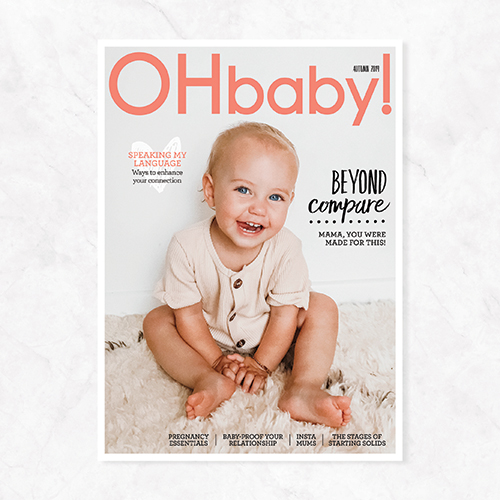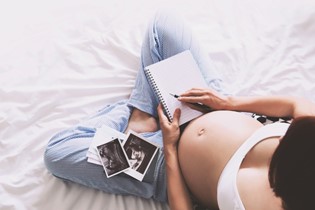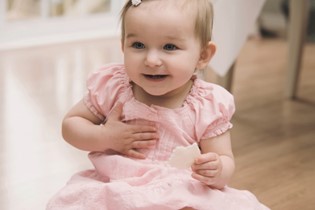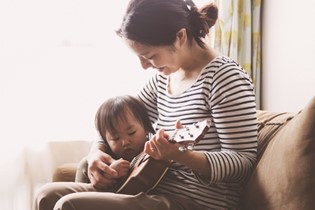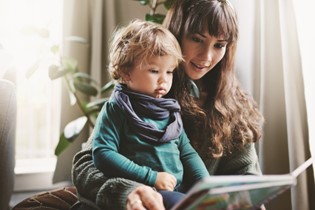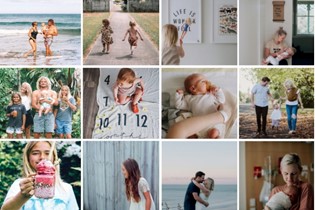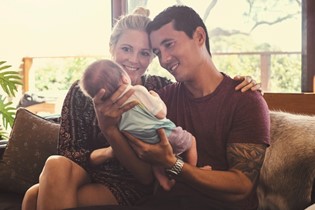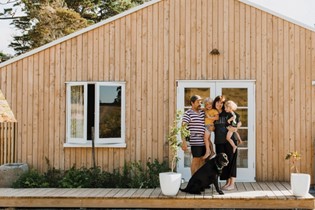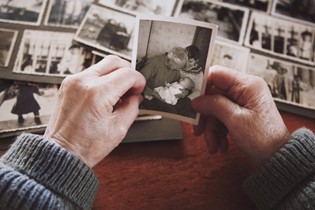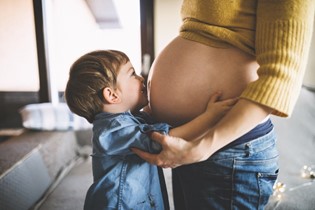Teach your baby to 'talk' using sign language
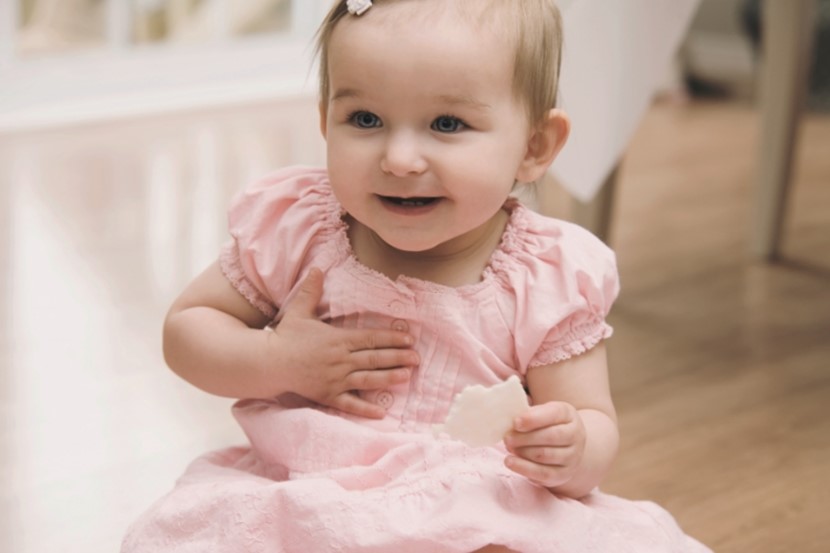
Jenny Chapman explains the far-reaching benefits of teaching sign language to your baby.
Imagine if your baby could communicate with you before they were able to talk. How chilled-out would your child be if they could actually tell you what they wanted? And how much easier would that make your job as a parent?
These things are not only possible, but remarkably easy to achieve with sign language. Children understand hundreds of words before they can produce them through speaking. Using sign language gives them a tool to tell you what they need, want or are interested in. They can start to grasp simple signs from as young as seven months old.
I started using New Zealand Sign Language (NZSL) with our fourth daughter, Hope, when she was a few weeks old. I wanted to use NZSL because it’s an official language of New Zealand. Admittedly it was an experiment at first, and I didn’t have much faith that it would be very useful. However, it soon became clear that, at just a few months old, Hope recognised some well-used words such as ‘milk’ and ‘bath’. She would smile at us and flap her arms as we signed the word and said it at the same time. By seven months old she was trying to sign single words back to us and even ‘ask’ for milk by attempting to sign. Remarkably, at nine months old she started to sign her ideas to us by using two signs together.
One particular evening when I was out and her dad Eden was at home, Hope cried and Eden asked what she needed. She signed “Swing more”. Then, after her swing she asked her dad for a ‘bath’. This was something Eden hadn’t experienced with our other girls, and it helped him connect with Hope more easily. It was so exciting for him to be able to understand her and meet her needs, things he had found much more difficult with her siblings. It was beautiful seeing him ask her what she needed, then respond to her signs, and I noticed a deep bonding between Eden and Hope as a young baby.
POSITIVE OUTCOMES
The number one question people ask me is “But won’t learning sign language slow down my baby’s speech?”. Amazingly, all the research states exactly the opposite. Through signing, children learn not only how to converse, but also how sentence structure works. The research reveals that, by age three, children who sign have a greater vocabulary and often verbalise earlier than their non-signing peers. They expect conversation to mean something, and they expect and trust the adults around them to respond to them – the basis of all communication.
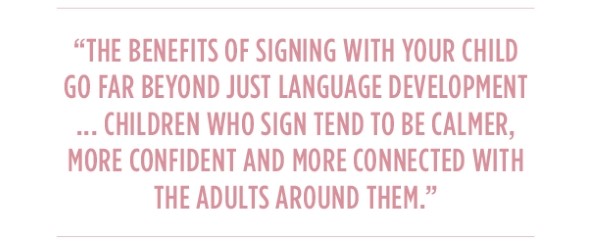
The benefits of signing with your child go far beyond language development. A recent research article called The Positive Outcomes Of Using Sign Language With Babies, by Dr Rosemary Lyons, shows the advantages are linguistic, emotional and relational. Children who sign tend to be calmer, more confident and more connected with the adults around them. It makes sense that being able to understand others and being understood ourselves helps us to relax. And relaxed children learn more easily as their brain is calmer. Here’s what Dr Lyons’ research shows:
LANGUAGE DEVELOPMENT
|
☙ Signing babies show increased interest in books. ☙ Signing babies often talk earlier than non-signing peers. ☙ Word comprehension is enhanced. ☙ Parents speak more to signing babies than non-signing peers. ☙ Language development is accelerated compared to non-signing peers. ☙ Toddlers who signed as babies have larger vocabularies than same-age peers who didn’t use baby sign. ☙ Children who used signing when babies show a greater understanding of language and syntax (ie the way words are put together to make a grammatically correct sentence). ☙ Signing babies show enhanced understanding of their world. |
EMOTIONAL DEVELOPMENT
|
☙ Confidence, self-esteem and trust are enhanced due to adults responding appropriately to the baby’s signals and requests. ☙ Emotional expressions of frustration decrease. ☙ Emotional acting out/tantrums decrease. ☙ Episodes of crying by signing babies decrease. ☙ Calmness increases. ☙ Toddlers who had signed as babies engaged in more sophisticated play than toddlers who were non-signing babies. |
RELATIONAL BENEFITS
|
☙ Signing created enhanced relationships through more responsive, reciprocal, supportive and encouraging interactions with adults. ☙ Connection to important adults was enhanced through more successful and positive interactions. ☙ There were more positive emotional experiences for both adults and babies during communication. |
GETTING STARTED
We’ve been signing with our fifth daughter, Anneliese, since the day she was born, and she’s very connected with what we’re saying and signing. However, starting to sign with your baby at any age has huge benefits. Older babies tend to pick up the signs very quickly, which may be more rewarding for parents rather than getting no reply from your attempts with a very young baby.
You can teach a young baby to sign using these three simple steps. One: make eye contact; two: sign and say the word; three: do the action that matches the word and sign. For example, if you’re about to feed your baby, you can say to them “Do you want some milk?” (signing the milk sign while looking at them) then put them to the breast or bottle. Combining eye contact with the word, the sign and the action will help your baby make the connections. Also, repetition is key. Whenever you interact with your baby, chat with them and add signs too – you’ll see their brain working away before your eyes.
To begin signing with your baby, start with signs that are part of your daily routine. ‘Hello’, ‘milk’, ‘nappy’, ‘bath’ and ‘bed/sleep’ are excellent first signs that everyone in the family will learn quickly and are easily shared with your baby many times throughout the day. The diagrams of these signs (below) are from my book, Kōrero Mai – Family.
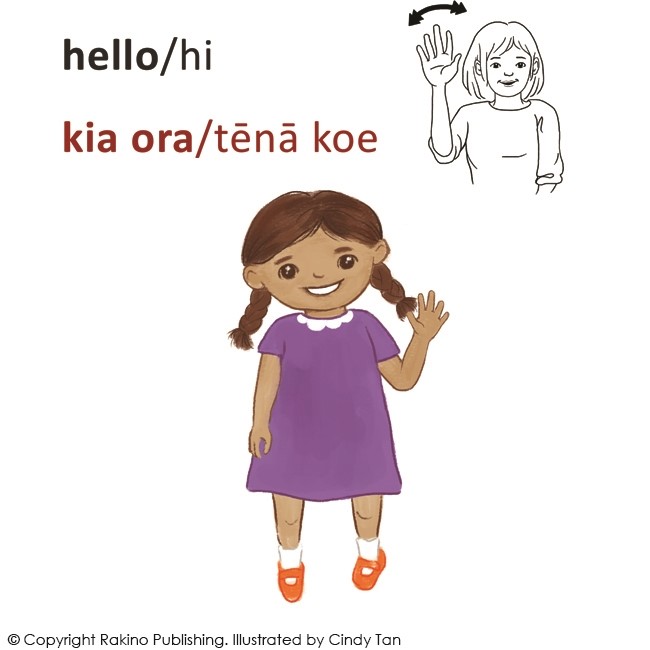
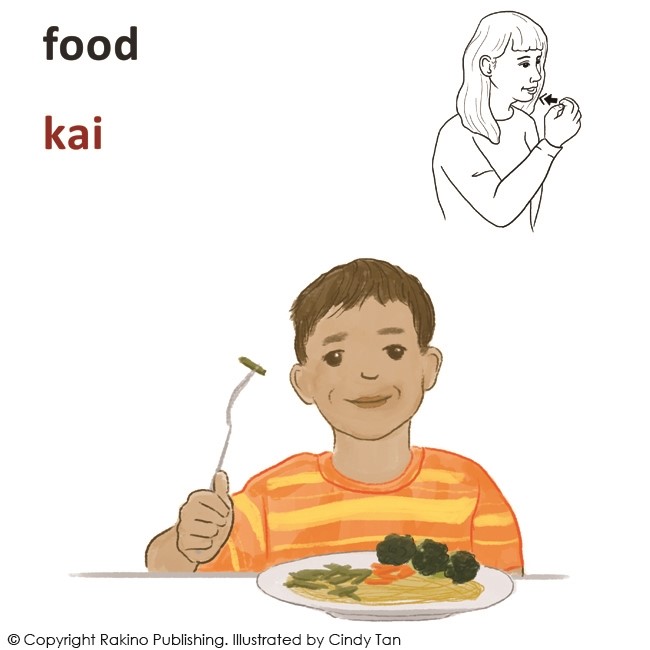
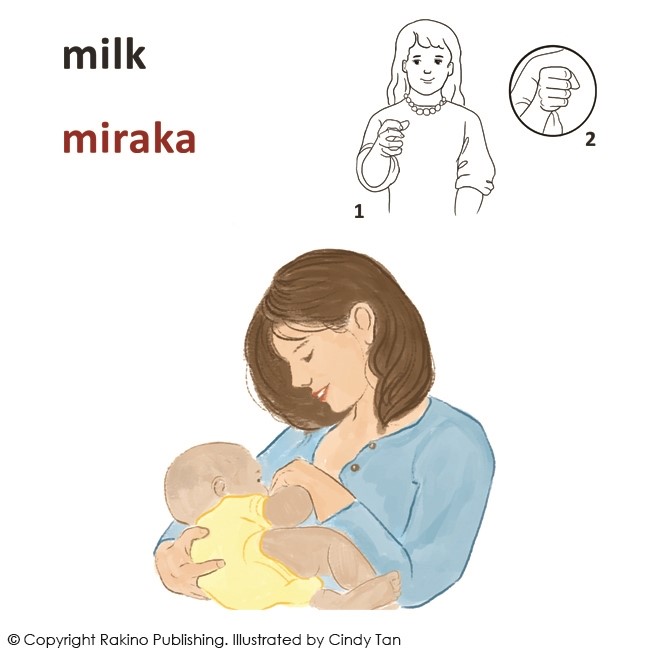
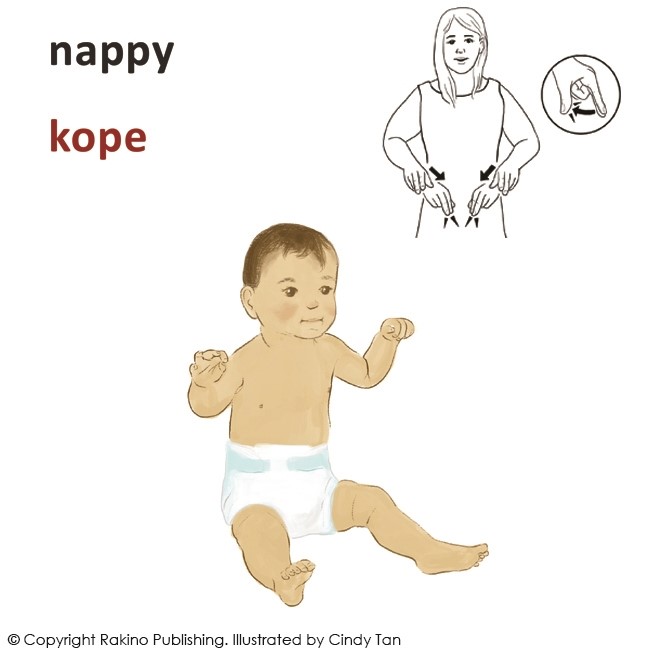
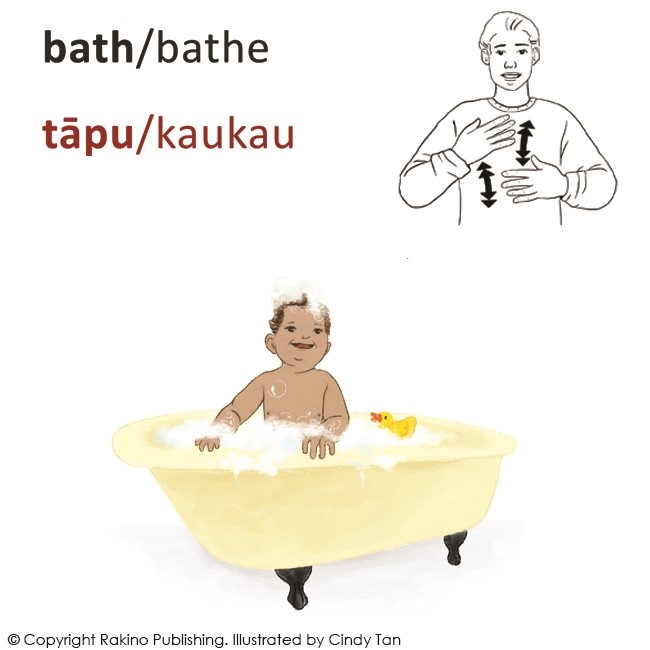
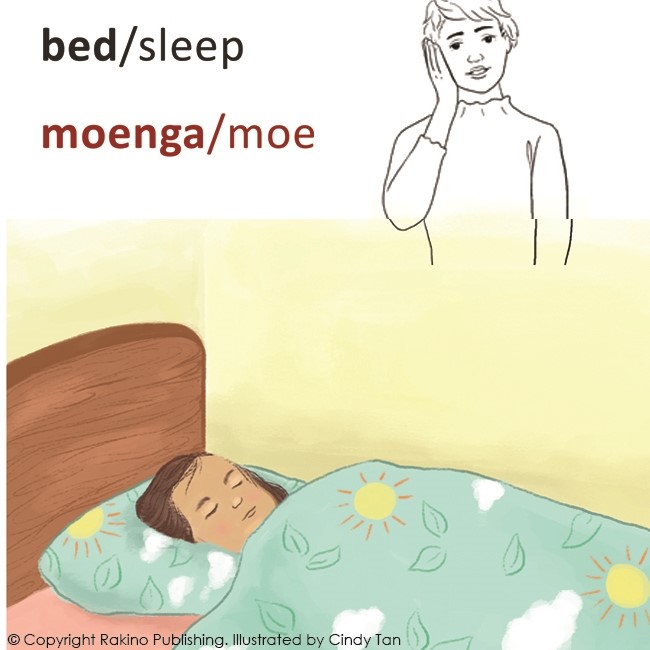
Look carefully at the arrows indicating movement. For ‘milk’ the sign is made by opening and closing the fist as if milking a cow. For ‘nappy’, the finger tips are held down near your hips and the fingers close as if fastening a nappy. To see the signs in action, the New Zealand Sign Language Online Dictionary has a free app with static images as well as video demonstrations. Remember, it doesn’t matter if your baby doesn’t do each sign absolutely correctly. What matters is that you both know what your baby means. Over time, you can correct the signs to make them in line with NZSL, but for little ones, meaning should be the main focus. Children even experiment with making up their own signs. Go with it! Communication is the most important thing here.
WHEN THE SPOKEN WORD TAKES OVER
An amazing thing about the human brain is that it always chooses the most efficient way to operate. Our brains want our daily lives to be as simple and efficient as possible. So, when your child eventually learns to communicate verbally, it’s only natural that they’ll start signing less, because talking is a quicker way to communicate than signing. We’ve found that using sign language with Hope has also brought about a fabulous extra benefit in our family. When she becomes tired, frustrated or upset, she often reverts back to signing as it’s easier for her to communicate what she wants during these times. Now, as a three-year-old, she’s learnt the signs for emotions. During emotional overloads (commonly referred to as tantrums), it’s virtually impossible for a child to access their spoken words. However, using their hands is much more manageable. This has resulted in fewer meltdowns for Hope compared to her older sisters, because we can help her process her emotions and comfort her more quickly.
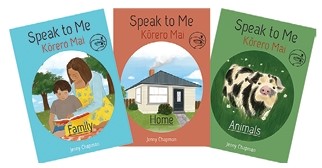
Jenny Chapman is a primary school teacher who lives in Rotorua with her husband Eden, a school principal, and their five daughters. Jenny’s passion for education and communication motivated her to create these three resources for little hands and tired parents to explore: Kōrero Mai – Family, Kōrero Mai –Home, and Kōrero Mai – Animals. Each one is presented in the three official languages of Aotearoa: Te Reo Māori, New Zealand Sign Language and English. You can buy Jenny’s books at bookstores and at kiwisign.nz, where you can also find out more about using New Zealand Sign Language with your baby.

AS FEATURED IN ISSUE 45 OF OHbaby! MAGAZINE. CHECK OUT OTHER ARTICLES IN THIS ISSUE BELOW
